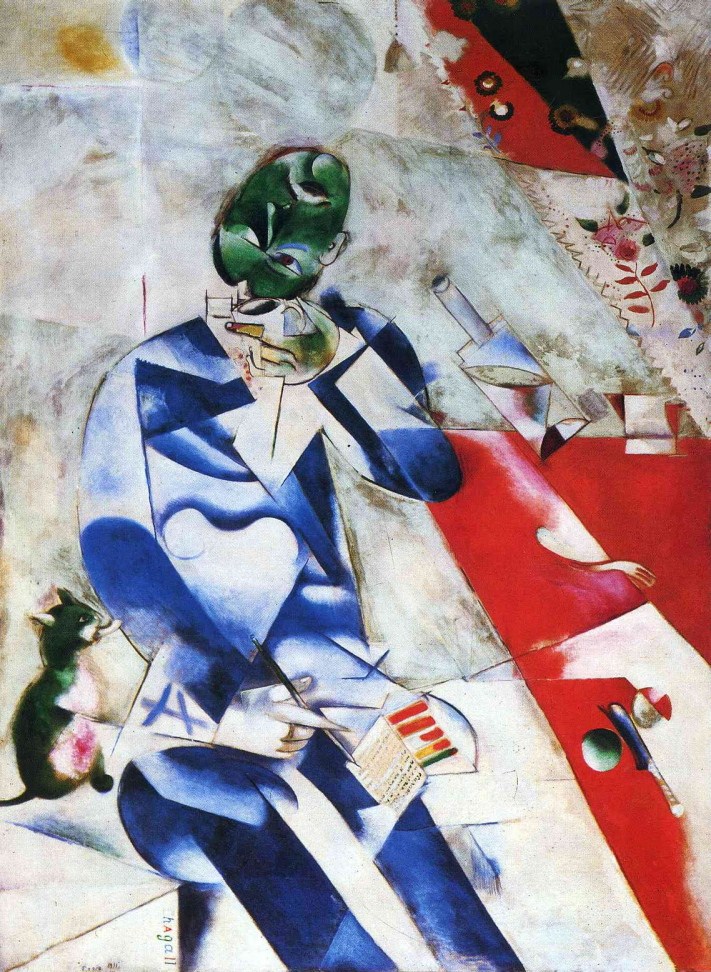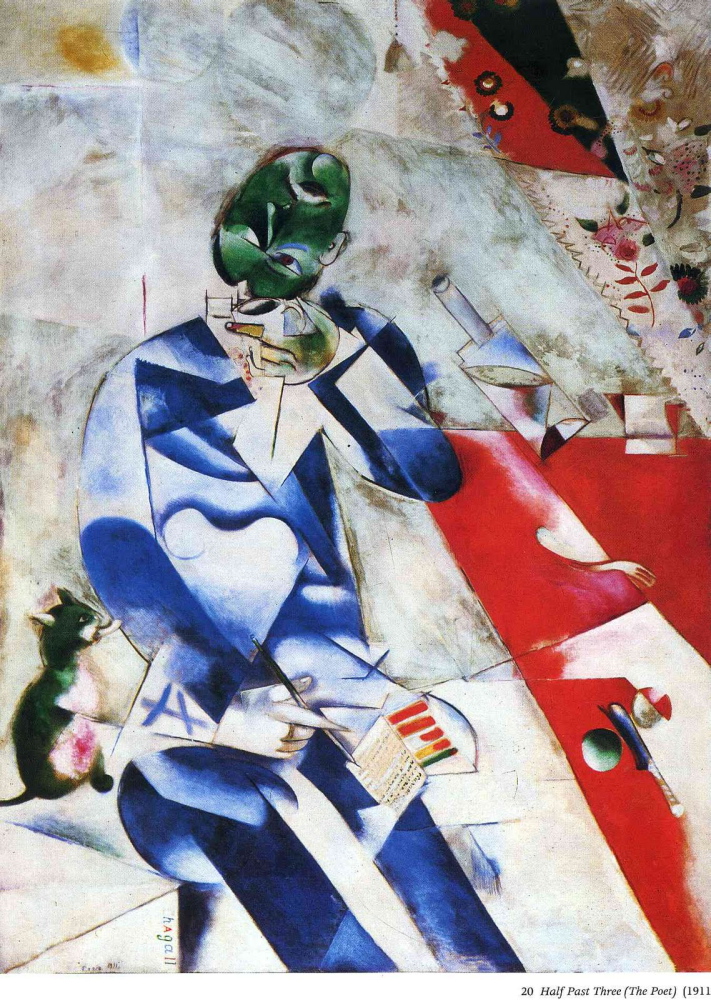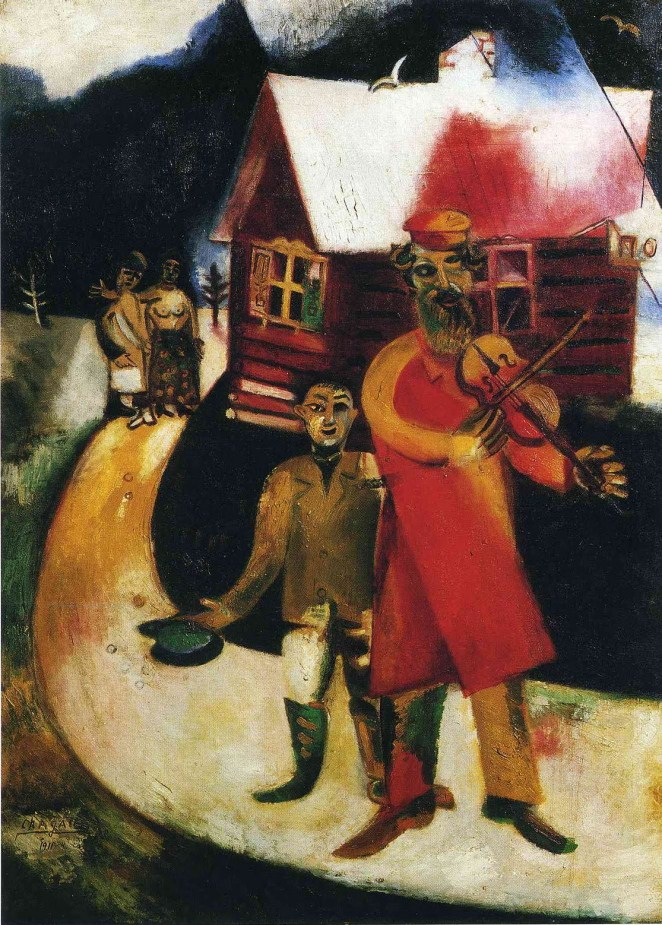To continue let’s go to the bottle and how it is supported by a rhythm of parallels. From left to right we have the poet’s right leg, his forearms, a line on his chest, the edge of a red triangle, a small gray rectangle, a small red triangle, and the curtain. There are a couple other subtle ones as well.
Another series of parallels which is very closely related, are his left leg and the small spatial angle beside it. The rhythm continues with a very subtle plane in the grayish area, then the edge of the red table, which integrates with blue on his forearm. Please note the horizontal integrating his arm to the table. Chagall’s compositional assessments are very sophisticated and most impressive.
Note how his inverted the head is integrated with the background. There is an edge which connects to the chin and then runs to the right into the curtain. Can you feel how it supports the head?
We could say the composition has a triangle motif supported by ovals, circles and rectangles. Take the hand holding the glass. It is a partial oval, and harmonizes with the head and other ovals above.
My last observation. Note how the cat is in space. I say this because of the spatial plane, or the background overlapping the cat. Do you feel it?
I could go on. Chagall is wonderful!



